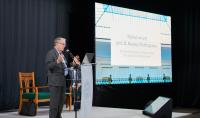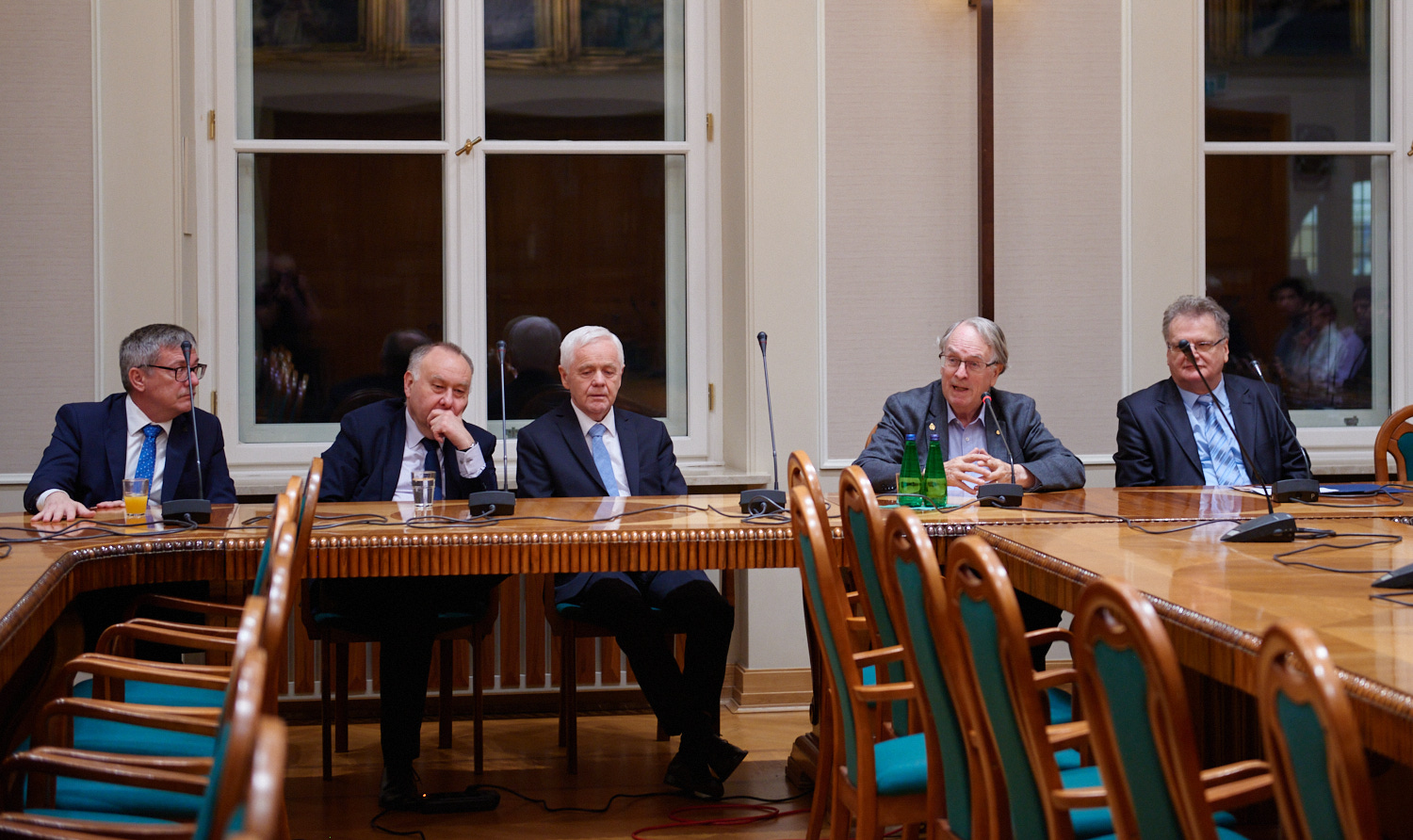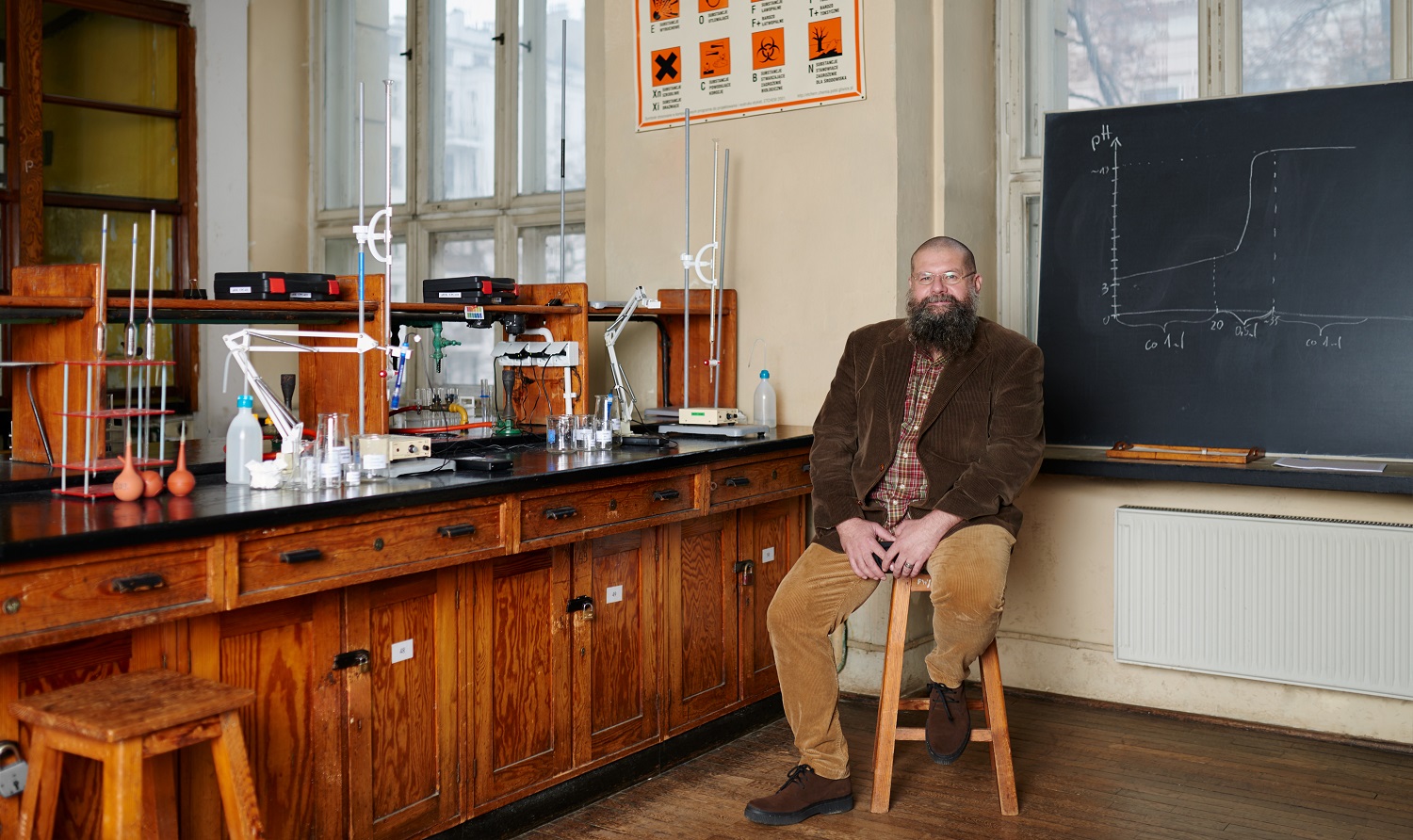WUT scientists on a Nobel laureate and the importance of his research
Prof. M. Stanley Whittingham received an honorary doctorate from the Warsaw University of Technology. This outstanding chemist, winner of the 2019 Nobel Prize, has gained recognition for his work on lithium-ion batteries. This area has also been developed for years by scientists from the Warsaw University of Technology. Why is this such an important topic? What is worth knowing about it? And what is it like to know a Nobel Prize winner?
They are in our laptops, mobile phones, digital cameras, drones, power tools, and increasingly also in cars. Lithium-ion batteries have dominated the world. But this began only 30 years ago.
The benefits of lithium-ion batteries
“Compared to previous technologies (lead-acid, nickel-cadmium, nickel metal hydride batteries), lithium-ion batteries have a much higher energy density, so they are lighter and smaller,” explains Prof. Leszek Niedzicki from WUT’s Faculty of Chemistry. “With the same capacity, lithium-ion batteries weigh four to six times less than lead-acid batteries. This has enabled a rapid development of portable electronics, as well as the creation of long range electric cars.”
In addition, lithium-ion batteries discharge very slowly during storage – a device can be started even after months of not being used. The old types of batteries had to be recharged after just a few weeks of idleness.
“Also, lithium-ion batteries don’t have the memory effect, i.e., a decrease in capacity when we do not fully discharge the batteries or do not fully charge them,” explains Prof. Niedzicki. “This technology is also much more flexible when it comes to adapting its parameters to the needs of a given use. The latter is of great importance, especially for engineers designing new battery-powered devices.”
Lithium-ion batteries differ from older technologies both in terms of the materials used to build electrodes and electrolyte (battery components), and in terms of the way they work. As their anode, lithium-ion batteries use light and safe graphite instead of heavy and toxic lead or cadmium. In previous technologies, a reaction occurred between the electrode material and the electrolyte, which resulted in greater energy losses (reduced battery efficiency).
“In lithium-ion batteries, we have the movement of lithium cations between the anode and the cathode, and the incorporation of lithium into their structures without a change in their form or without reactions that would change the composition of the material,” says Prof. Niedzicki. “This results in significantly smaller energy losses and therefore a better use of the energy spent on charging the battery.”
This is especially important when charging an electric car or a domestic energy storage unit, e.g. a buffer for photovoltaics.
“With lithium-ion batteries, we can use over 90% of the energy that was spent on charging the battery instead of about 60% with lead-acid or 70% with nickel-cadmium batteries,” lists Prof. Niedzicki. “In the case of an electric car, we pay about one and a half times less per kilometre than if we were driving a car powered solely by a lead-acid battery. At the same time, the range of a car powered by lithium-ion batteries is four to six times greater”.
WUT’s battery involvement
One of the fathers of the lithium-ion battery technology is Prof. M. Stanley Whittingham, who has working in the field for 50 years.
“I first met Professor Whittingham in 1987, when, as a young PhD student, I took part in a Conference on Solid State Ionics held in Garmisch-Partenkirchen,” recalls Prof. Władysław Wieczorek, Dean of WUT’s Faculty of Chemistry. “At this conference, the International Society for Solid-State Ionics was established, and Professor Whittingham became its first president. In the following years, I attended schools and symposia for young scientists where Prof. Whittingham served as a lecturer”.
Prof. Wieczorek has been the head of the battery team at our Faculty of Chemistry for many years. As he admits, such a scientific path is part coincidence, and part conscious choice.
“When choosing the subject of my diploma thesis, I decided to focus on issues related to solid electrolytes and work in the team of Prof. Janusz Płocharski (who was then just Dr. Płocharski),” recalls Prof. Wieczorek. “Prof. Płocharski allowed me to choose the object of research by giving me a review article by Prof. Roger Linford (also an excellent scholar in the field of batteries). One of the objects presented there were polymer electrolytes operating in ambient temperatures, and already considered as potential replacements for liquid electrolytes in batteries. I chose this subject range and so began my 38-year adventure with electrolytes of various types, used in batteries, fuel cells or electrochromic systems”.
A fellowship that paid off
Prof. Wieczorek’s team includes Prof. Marek Marcinek. He also met Prof. Whittingham. This was in 2004 during a postdoctoral fellowship in the USA.
“I worked at the Lawrence Berkeley National Lab, which as a whole was involved in the BATT program, uniting all national labs, including Prof. Whittingham’s,” says Prof. Marcinek. “We worked together in the area of diagnostics of cathode materials. I was involved in spectroscopy and even had the pleasure of visiting Prof. Whittingaham several times in the laboratory. Back then nobody knew that the professor would one day receive the Nobel Prize”.
The result of Prof. Marcinek’s fellowship was the implementation at WUT of the technology for coating cathode materials and the production of anodes using microwave plasma. This supplemented the knowledge that WUT already had. Prof. Wieczorek’s team had – and still has – specialists who improve the work of electrolytes. To develop the battery, it was necessary to have two other main components – the cathode and the anode.
“I was able to transplant what I learned in the USA onto Polish soil,” says Prof. Marcinek. “Thanks to this, we were able to start work on entire cells”.











